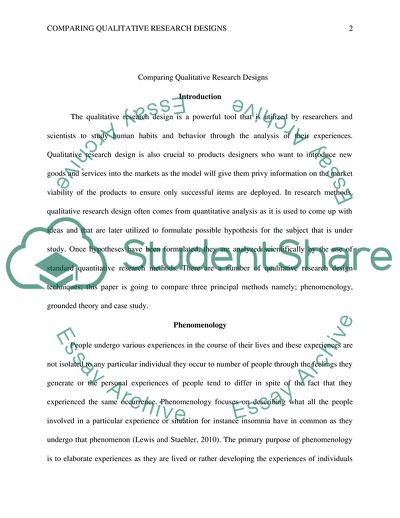Cite this document
(Comparing Qualitative Research Designs Essay Example | Topics and Well Written Essays - 1750 words, n.d.)
Comparing Qualitative Research Designs Essay Example | Topics and Well Written Essays - 1750 words. https://studentshare.org/sociology/1867572-comparing-qualitative-research-designs
Comparing Qualitative Research Designs Essay Example | Topics and Well Written Essays - 1750 words. https://studentshare.org/sociology/1867572-comparing-qualitative-research-designs
(Comparing Qualitative Research Designs Essay Example | Topics and Well Written Essays - 1750 Words)
Comparing Qualitative Research Designs Essay Example | Topics and Well Written Essays - 1750 Words. https://studentshare.org/sociology/1867572-comparing-qualitative-research-designs.
Comparing Qualitative Research Designs Essay Example | Topics and Well Written Essays - 1750 Words. https://studentshare.org/sociology/1867572-comparing-qualitative-research-designs.
“Comparing Qualitative Research Designs Essay Example | Topics and Well Written Essays - 1750 Words”. https://studentshare.org/sociology/1867572-comparing-qualitative-research-designs.


